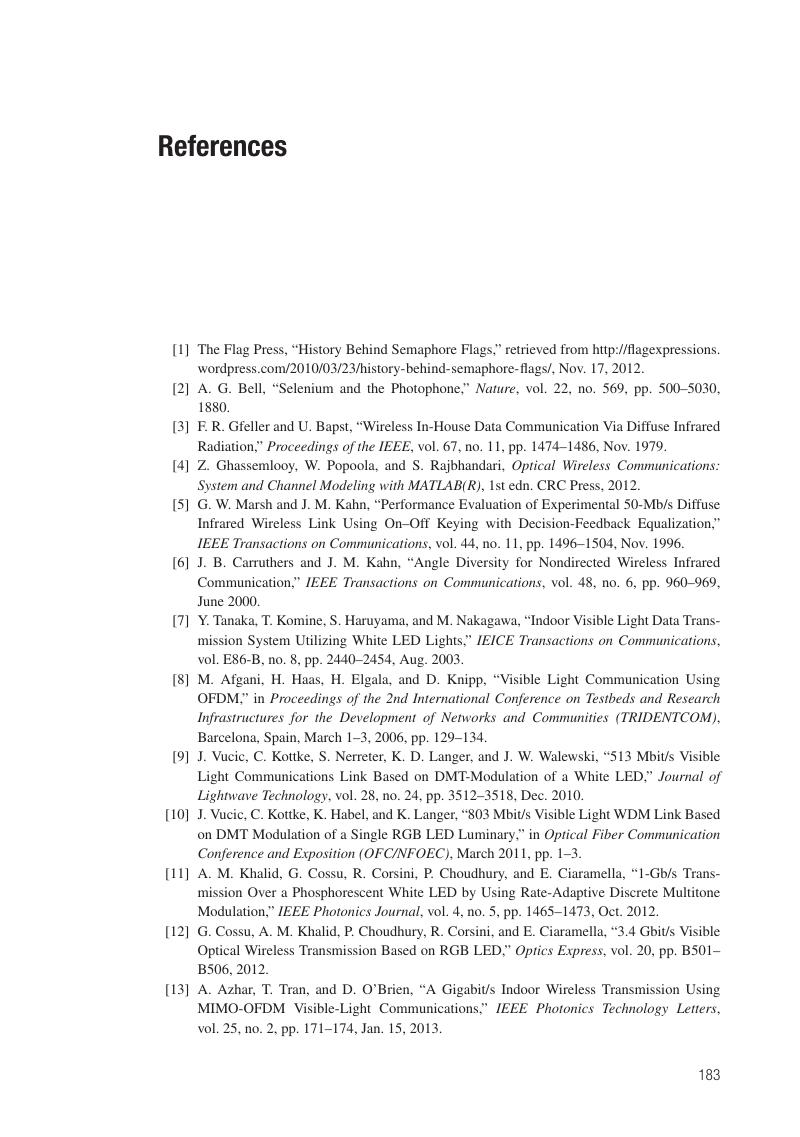References
Published online by Cambridge University Press: 05 March 2015
Summary

- Type
- Chapter
- Information
- Principles of LED Light CommunicationsTowards Networked Li-Fi, pp. 183 - 196Publisher: Cambridge University PressPrint publication year: 2015



